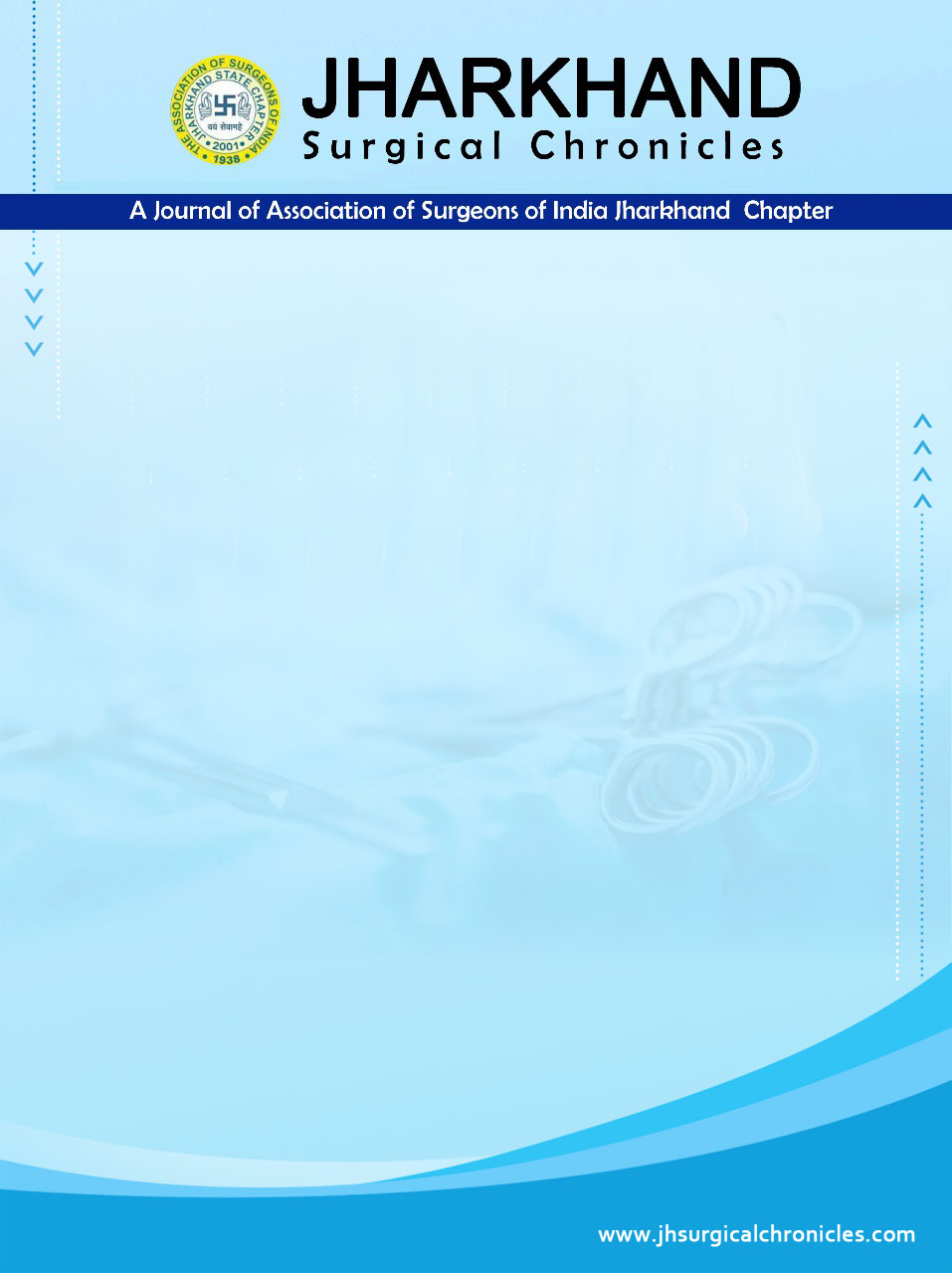Changing Pattern of Burns In a Private Hospital
Main Article Content
Abstract
Burn injuries pose a significant risk of infection due to their nature, immune-compromising effects, and prolonged hospital stays. Despite advancements in burn care, infections remain a major cause of morbidity and mortality. Understanding the evolving patterns of burns is crucial for effective management. This study aimed to analyze recent trends in burn cases, identifying demographic shifts and high-impact areas. Objectives included assessing the incidence and demographics of burns, investigating microbial colonization of wounds, and analyzing antibiotic resistance patterns. A demographic survey of 124 patients over 14 months included history, clinical evaluation, and wound management. Microbial colonization was studied through periodic wound swabs, cultured on various media. The study focused on identifying trends in burn etiology, patient demographics, and infection patterns. The study observed an increasing trend in burn cases, particularly domestic incidents, with a rise in scalds and electrical burns. Most affected were women. Pediatric burns and burns exceeding 20% total body surface area (TBSA) also increased. Urban burns were more prevalent but rural burns had higher mortality rates. Findings reflected changing infection patterns, with gram-negative organisms becoming predominant and multi-drug resistant. Variation in microbial sensitivity to antibiotics was noted, with Pseudomonas being most common. The study emphasized the importance of tailored antibiotic therapy based on antibiograms. In conclusion, the study provides valuable insights into evolving trends in burn injuries, emphasizing the need for proactive measures to address infection and antibiotic resistance. The findings contribute to improving burn care strategies and patient outcomes.
Article Details
How to Cite
References
Santucci, S. G., Gobara, S. and Santos, C. R. 2003. Infections in a burn intensive care unit: experience of seven years. J Hosp Infect. 53: 6-13.
Lari, A. R. and Alaghehbandan, R. 2000. Nosocomial infections in an Iranian burn care center. Burns. 26(8): 737-740.
Pruitt, B.A. 1984. The diagnosis and treatment of infection in the burn patient. Burns. 11: 79.
Benson, F. 2001. Microbiological applications lab manual, 8th edn. McGraw-Hill, p. 50-70.
Sandhu R, Dahiya S, Sayal P. Evaluation of multiple antibiotic resistance (MAR) index and Doxycycline susceptibility of Acinetobacter species among inpatients. Indian J Microbiol Res 2016;3(3):299-304.
Fouzia, Begum et al. “Changing patterns of burn infections.” IOSR Journal of Dental and Medical Sciences 5 (2013): 11-14.
Patil, Sangeetha & Reddy, K. & Jeer, Mariraj & Krishna, Shiva. (2015). Aerobic Bacterial Isolates from Burn Wound Infection Patients and their Antimicrobial Susceptibility Pattern. Journal of Medical Science And clinical Research. 10.18535/jmscr/v3i9.10.
Anwar, U., Majumder, S., Austin, O., & Phipps, A.R. (2007). Changing Pattern of Adult Burn Referrals to a Regional Burns Centre. Journal of Burn Care & Research, 28, 299-305.
Rajbahak, Sushma & Shrestha, C & Singh, A. (2015). Bacteriological changes of burn wounds with time and their antibiogram. Scientific world. 12. 70. 10.3126/sw.v12i12.13601.



